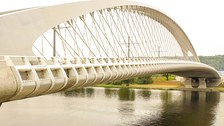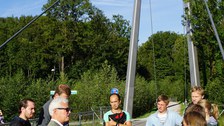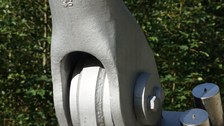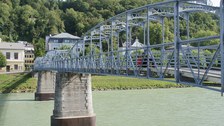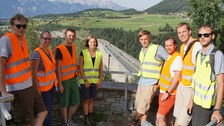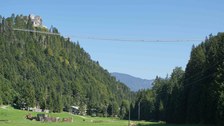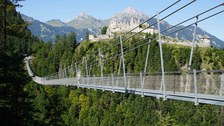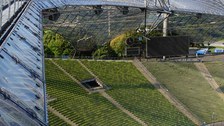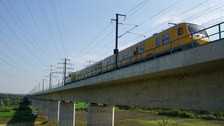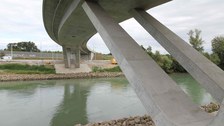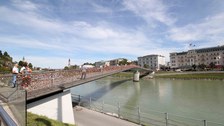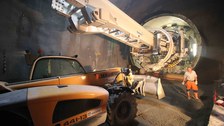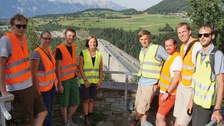Czech Republic, Austria and southern Germany
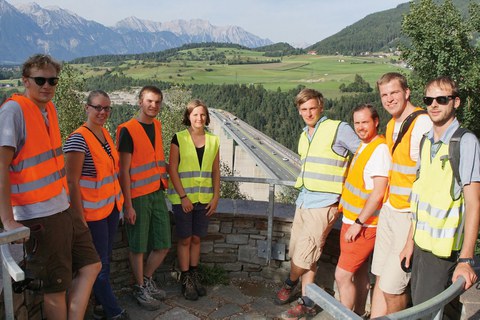
Excursion participants high above the Europabrücke bridge
This year's excursion took the students through the Czech Republic, Austria and southern Germany. In Prague at METROSTAV, we were given extensive information on the Troy Bridge, a net arch bridge with 200 m span and 36 m width. Despite the 2,500 ton steel structure, it appears filigree due to its very flat arch of only 20 m in height.
Via Hradec Králové with one of the most important AB traffic junctions in the Czech Republic, the tour continued to Vienna. Here, the folding structure of the roof over the main station as well as the new construction of the Prater junction and the Inzersdorf elevated road, accompanied by ASFINAG, were on the agenda. At the Prater junction, the construction of two new disentanglement structures over the Danube Canal is currently underway, as well as the demolition and new construction of the Erdberg Bridge - a masterpiece of planning while maintaining four lanes and 190,000 vehicles per day.
After visiting the floating island of the Mur in Graz, the tour continued to Deutsch-Grutschen to the Granitztal tunnel chain. After an introduction at HOCHTIEF's construction office, the students were able to walk through the beginning of the 2.6-kilometer-long tube and gain an insight into the exciting process of tunnel construction using blasting.
In Salzburg, the Wilhelm Kaufmann Bridge, the Makart Bridge and the historic Mozart Bridge were on the agenda as pedestrian and cycle bridges. We discussed special structural features with the structural engineers, such as vibration damping for the Wilhelm Kaufmann Bridge, a very slender cable-stayed bridge with a pylon on one side. Via the Mangfall Bridge, a prestressed concrete beam bridge designed by Ulrich Finsterwalder in 1959, whose footbridges were constructed as prestressed trusses, the tour continued to the Europabrücke Innsbruck. Due to the one-sided closure for maintenance work, the 192 m high bridge, managed by ASFINAG, could be walked on by the students.
The HOCHTIEF construction site of the Pfunds hydroelectric power plant was also part of the wide-ranging program. In a more than 20 km long tunnel, built using the double shield driving method, the students were able to experience live the dimensions of the machines on the construction site as well as the production of the segments in the specially built factory hall.
One of the highlights was the 'Highline179' in Reutte, Europe's longest pedestrian suspension bridge at 406 meters. With a height of 115 m, this bridge is a very airy attraction and not suitable for everyone due to its high susceptibility to vibrations and a grating catwalk.
After the inspection of the roof of the Olympic Stadium in Munich, an architectural masterpiece by Frei Otto and Günther Behnisch, the tour of the Saale-Elster Valley Bridge as part of the VDE 8 transport project was the final highlight. It was possible to walk through the box girder and gain an insight into the monitoring of the structure by MARX KRONTAL and the evaluation of the data.
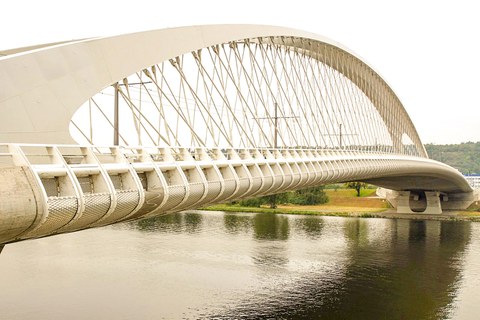
© Sebastian Wilhelm
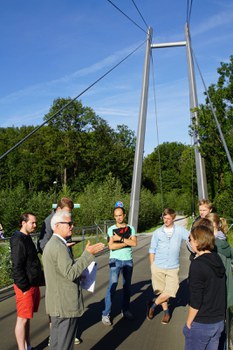
© Sebastian Wilhelm
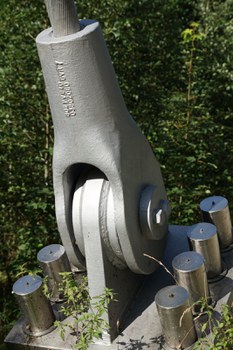
© Sebastian Wilhelm
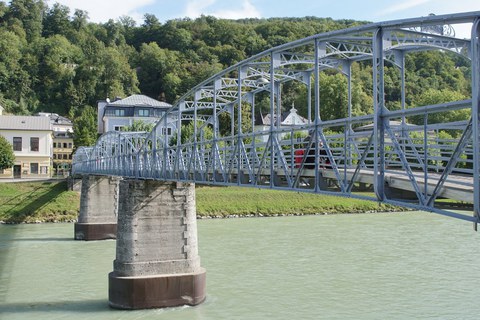
© Sebastian Wilhelm
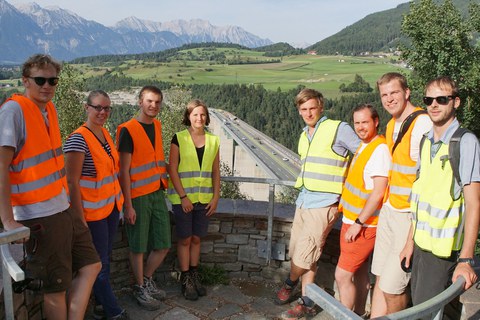
© Sebastian Wilhelm
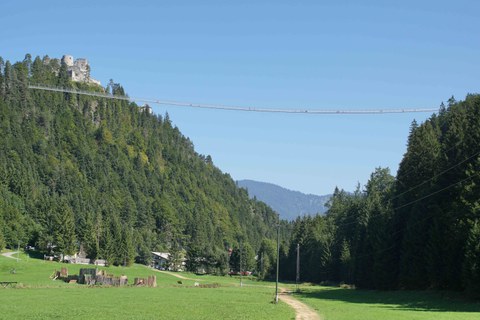
© Sebastian Wilhelm
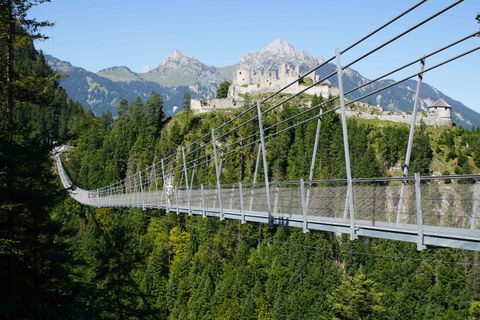
© Sebastian Wilhelm
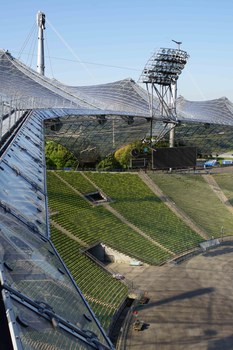
© Sebastian Wilhelm
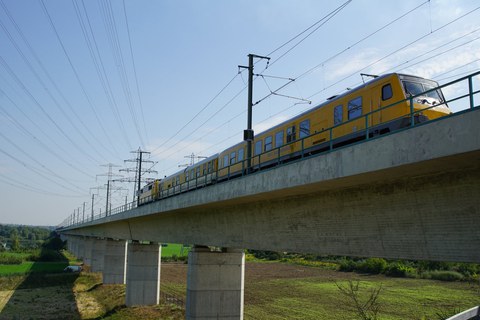
© Sebastian Wilhelm
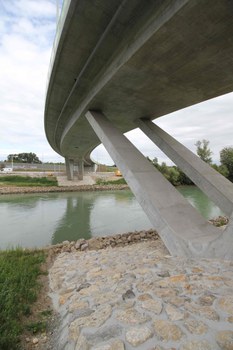
© Robert Zobel
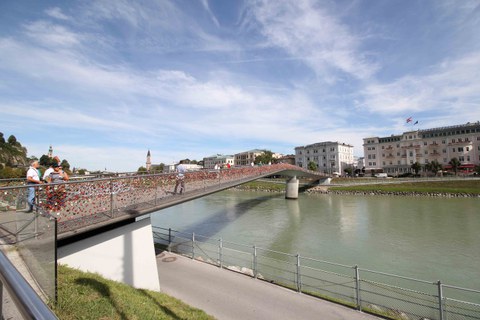
© Robert Zobel
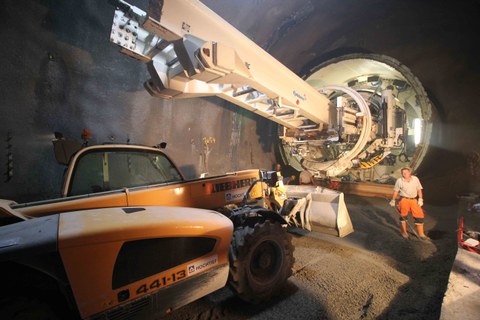
© Robert Zobel
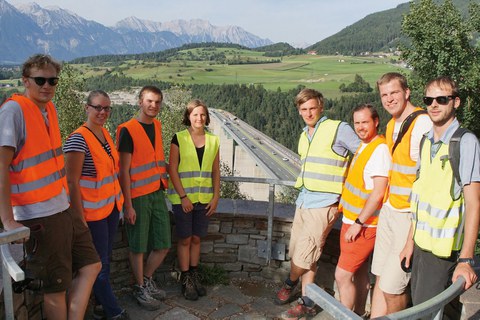
© Peter Augschöll

